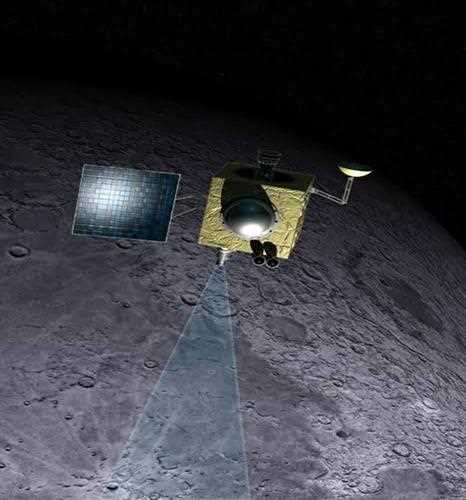 Chandrayaan-1 was not sent to Mars, It was actually India's first lunar mission, which was launched on October 22, 2008, and entered into the lunar orbit on November 8, 2008.
Chandrayaan-1 was not sent to Mars, It was actually India's first lunar mission, which was launched on October 22, 2008, and entered into the lunar orbit on November 8, 2008.
The objective of Chandrayaan-1 was to study the lunar surface and to confirm the presence of water on the Moon. It carried eleven scientific instruments, including a high-resolution camera, a spectrometer, a radar, and a moon mineralogy mapper.
Chandrayaan-1 was launched from the Satish Dhawan Space Centre in Sriharikota, Andhra Pradesh, India, aboard a PSLV-C11 rocket. After reaching the Moon, it first entered into an elliptical orbit of about 100 km x 7500 km, and then lowered its orbit to 100 km x 100 km. It remained in this polar orbit for nearly a year and transmitted valuable data to Earth, including images of the lunar surface with unprecedented detail.
The mission was not without its challenges, as the spacecraft lost communication with Earth on August 29, 2009. However, the Indian Space Research Organisation (ISRO) managed to re-establish contact with the spacecraft on September 2, 2009, and resumed its operations.
Chandrayaan-1 completed its mission on August 30, 2009, after having orbited the Moon for 312 days. During this time, it had transmitted more than 70,000 images of the lunar surface, including the first 3D images, and had detected water molecules in the polar regions of the Moon. The discovery of water on the Moon was a significant achievement, as it opened up possibilities for future manned missions to the Moon and for utilizing the Moon's resources for space exploration.
In conclusion, Chandrayaan-1 was not sent to Mars, but to the Moon, where it successfully orbited for nearly a year and transmitted valuable data back to Earth. Its discovery of water on the Moon was a significant achievement for India's space program and for space exploration in general.
Also Read:- Chandrayaan-2, Chandrayaan-3